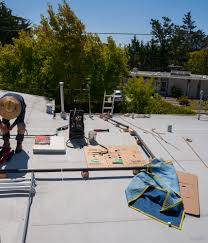Air conditioning has become an essential part of modern life, providing comfort and improving the quality of indoor environments. Despite its widespread use, many people don’t fully understand how air conditioning systems work. This article will explain the basic principles and components of air conditioning systems in an easy-to-understand manner.
Air conditioning systems operate on a simple scientific principle: the transfer of heat. To cool indoor air, the system removes heat from inside the building and expels it outside. This process involves the use of a refrigerant, a special fluid that absorbs heat from the indoor air and releases it outside. The refrigerant’s ability to change states from liquid to gas and back to liquid is central to the air conditioning process.
The basic components of an air conditioning system include the evaporator, the compressor, the condenser, and the expansion valve. These components work together in a continuous cycle to cool indoor air. Let’s take a closer look at each part and its role in the cooling process.
The cycle begins in the evaporator, which is located inside the building. The evaporator contains a series of coils filled with the refrigerant. As warm indoor air passes over these coils, the refrigerant absorbs the heat from the air and evaporates into a gas. During this process, the air loses its heat and moisture, becoming cooler and drier. A fan then blows the cooled air through ducts and into the rooms of the building, providing a comfortable indoor environment.
After the refrigerant has absorbed heat in the evaporator, it travels to the compressor, which is usually located outside the building. The compressor plays a crucial role by compressing the refrigerant gas, raising its temperature and pressure. This step is essential because it prepares the refrigerant to release the absorbed heat when it reaches the condenser.
The next stage of the process occurs in the condenser, which is also located outside the building. The condenser consists of another set of coils, but unlike the evaporator coils, these coils release heat instead of absorbing it. As the high-pressure, high-temperature refrigerant gas flows through the condenser coils, it releases the absorbed heat to the outside air. This release of heat causes the refrigerant to condense back into a liquid state.
The final component in the air conditioning cycle is the expansion valve. This valve is located between the condenser and the evaporator and serves to regulate the flow of the refrigerant. The expansion valve reduces the pressure of the liquid refrigerant before it enters the evaporator coils. This reduction in pressure causes the refrigerant to cool rapidly, making it ready to absorb heat from the indoor air once again. The refrigerant then returns to the evaporator, and the cycle repeats.
This continuous cycle of heat absorption and release is what keeps indoor environments cool and comfortable. It’s important to note that air conditioning systems also dehumidify the air as part of the cooling process. When warm air passes over the cold evaporator coils, the moisture in the air condenses on the coils and is collected in a drain pan. This removal of moisture not only makes the air feel cooler but also helps prevent the growth of mold and mildew.
Air conditioning systems come in various types and sizes to suit different needs. The most common types include central air conditioning systems, window units, and split systems. Central air conditioning systems are typically used in larger buildings and homes. They consist of a central unit that cools air and distributes it through a network of ducts. Window units are self-contained systems that are installed in a window or a wall opening. They are suitable for cooling individual rooms or small spaces. Split systems, on the other hand, have an outdoor unit containing the compressor and condenser, and an indoor unit containing the evaporator. These systems are popular for their energy efficiency and flexibility in installation.
Modern air conditioning systems are equipped with advanced features to enhance efficiency and comfort. Many systems include programmable thermostats that allow users to set specific temperatures for different times of the day. This feature helps save energy by reducing cooling when it’s not needed. Some systems also have variable speed compressors and fans that adjust their operation based on the cooling demand. This not only improves energy efficiency but also provides more consistent and comfortable indoor temperatures.
Energy efficiency is a significant consideration in the design and use of air conditioning systems. The energy efficiency ratio (EER) and seasonal energy efficiency ratio (SEER) are metrics used to measure the efficiency of air conditioning units. The EER is the ratio of cooling capacity to power input, measured at a specific temperature. The SEER, on the other hand, is a measure of the overall efficiency of the unit over an entire cooling season. Higher EER and SEER ratings indicate more efficient units, which can result in lower energy bills and reduced environmental impact.
Regular maintenance is crucial to ensure the optimal performance and longevity of air conditioning systems. Simple tasks such as cleaning or replacing air filters, checking refrigerant levels, and inspecting the system for leaks can significantly improve efficiency and prevent costly repairs. Professional servicing is also recommended at least once a year to keep the system in top condition.
In conclusion, air conditioning systems work by removing heat from indoor air and releasing it outside through a continuous cycle involving the evaporator, compressor, condenser, and expansion valve. The use of refrigerant and the ability to change its state from liquid to gas and back again is central to this process. Various types of air conditioning systems are available to meet different cooling needs, and modern systems come with features that enhance efficiency and comfort. Understanding how air conditioning works can help users appreciate the technology that keeps their environments cool and comfortable, as well as the importance of regular maintenance to ensure its efficient operation.
4o
